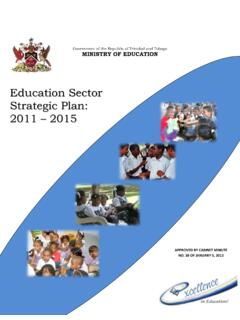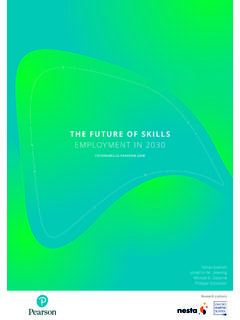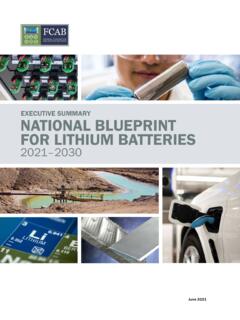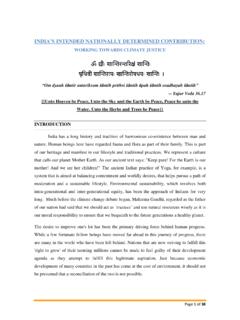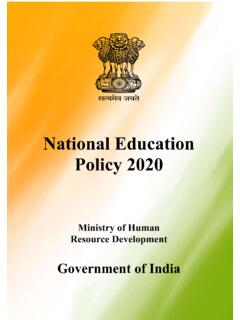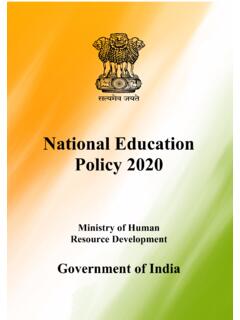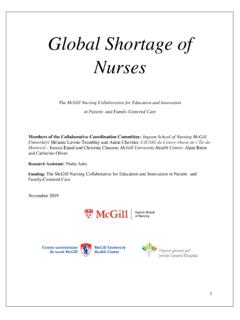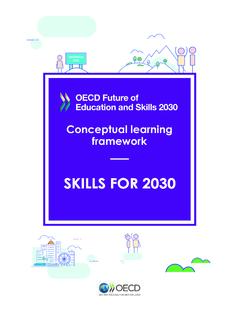Transcription of Ethiopian Education Development Roadmap (2018-30)
1 1 Ethiopian Education Development Roadmap (2018-30) An integrated Executive Summary Ministry of Education Education Strategy Center (ESC) Draft for Discussion By Tirussew Teferra, Amare Asgedom, Jeilu Oumer, Tassew W/hanna, AkliluDalelo and Berhannu Assefa Addis Ababa July 2018 2 Table of Content Page 1. Introduction 3 2. Methodology 5 3. Objectives 6 4. Pre-primary and Primary Education 7 5. Secondary and Preparatory Education 22 6.
2 Teacher Preparation and Development 36 7. higher Education 49 8. Technical and Vocational Education and Training (TVET) 65 9. Policy, Governance and Leadership 86 10. References 100 3 1. Introduction In January 2016, the Ministry of Education ( Education Strategy Centre) developed a concept note to reform the Education sector in accordance with the national vision and national Development goals. Following this, work immediately started with a series of activities that included Development of inception report, desk review, field study, international benchmarking visit, and a variety of consultations with stakeholders.
3 This report is therefore the result of a variety of research activities and consultations (conferences and workshops) that led to Development of fundamental shifts to transform the educational system to accord with the requirements of 21st century educational systems that play key roles in transforming the socio-economic systems, particularly the industrialization process that Ethiopia finds itself at the present time. Ethiopia is a country that is on a journey to its renaissance targeting at achieving peace, unity- with-diversity, broad and rapid socio-economic growth, establishment of democratic systems and good governance. The Government has been engaged in a major effort to transform Ethiopian society and place the country on a trajectory to become a lower middle-income economy by the year, 2030. Over the last several years, the economy grew by nearly 10 per cent per annum, one of the fastest growth rates registered in the world.
4 During this time, significant attention has been given to upgrading economic and social infrastructure and promoting pro-poor spending on Education , health, and other services to benefit the poor and the marginalized. Understanding this crucial role, the Education sector has passed through a series of successive, rolling Education Sector Development Programs (ESDP I-V). Since the formulation of the 1st Growth and Transformation Plan (GTP I), Education was given a special attention in the transformation of the economy from agriculture-led to industry-led activity and thereby supporting the manufacturing sector by supplying the required professionals and problem solving technological innovations. To achieve its vision of becoming a lower middle income by 2030, Ethiopia has also developed the 2nd Growth and Transformation Plan (GTP II) built on sector policies, strategies and programs and the UN sustainable Development goals.
5 GTP II aims to achieve an annual average real GDP growth rate of 11 per cent, pursing aggressive measures towards rapid industrialization and structural 4 transformation such as increasing the productive capacity and efficiency of the economy by rapidly improving quality, productivity, and competitiveness of agriculture and manufacturing industries, and accelerate Human capital Development and technological capacity building and ensure sustainability. Education is instrumental to attaining these Development goals through application of science, technology and innovations. The latter are major instruments to create wealth and bring about national Development . According to GTP II, greater shares of economic production will come from industry and manufacturing with the consequent demands for middle- and higher -level skilled manpower to be supplied by the educational system. Achieving these visions require further expansion of access to high-quality basic, general and tertiary Education ; and special efforts to improve the overall literacy and numeracy level of the population and producing capable university graduates that serve the industry.
6 This report integrates three research findings; (1) the desk review report; (2) the field report (3) the benchmarking visit report; and (4) various consultation inputs. The international benchmark visit took place between October 7 and October 22, 2017 to two Asian countries, Vietnam and Malaysia. The two countries are known for having a high performing educational system as gauged by PISA results ( Vietnam ranked 12th compared to USA which stood 28th in the 2016 PISA results of children who are 15 years old). This integrated summary document contains several findings and proposed reforms (shifts). At the present stage of the Roadmap Development process, the areas (pillars) of fundamental change (paradigm shifts) in each area (thematic area) are identified and presented to a concurrent validation workshop with experts of each thematic area and achieved useful inputs. The findings and proposed reforms are briefly discussed theme-by theme in the ensuing sections of the report which has six thematic areas: (1) pre-primary and primary Education , (2) secondary and preparatory Education (3) teacher Education and Development , (4) higher Education , (5) TVET, and (6) policy, governance and leadership.
7 5 2. Objectives The purpose of the desk review (policies, plans, strategies, practices); local and international experiences, benchmarking visits, and the field visits for empirical data collection was to assess the performance (access, equity, quality, relevance, efficiency) of the Education system, assess the gaps and expectations of various stakeholders on Education and training policy, evaluate the sufficiency of the policy and its implementation strategy considering the current vision and the Development perspectives to become middle income country. The purposes of the benchmarking were to serve as a tool or reference points for setting ambitious improvement goals, increases the potential for improvement in numerous ways, as it provides a systematic approach to quality improvement through identification of new ideas and innovative approaches, emphasis on understanding the processes underlying successful best practice makes it a useful tool in the formulation of plans, initiatives and strategies for achieving these goals and helps to understand the process performance gaps in our system compared with other leading system and how these leaders have changed their governance structures, processes, and system.
8 In general, both attempts serve as an input for the Development of Education Roadmap for 2018-2030. Therefore, this report focuses on the desk review, benchmarking visits and field data on the educational practices and implementation strategies of the six thematic areas. 6 3. Methodology In the desk review, national and international relevant documents were assessed. A systematic content analysis method was used to identify major themes and patterns. The field work employed both quantitative and qualitative approaches, and covered all relevant state actors and non-state actors including the federal government, nine regional states, the two city administrations, civil societies and the general public. In this exercise, opinions and views were captured from top political leaders such as ministers, parliamentarians, regional presidents, and bureau heads. On the other hand, professionals (university presidents, deans, directors and experts), professional association leaders, school principals, teachers, students as well as parents have participated in the study.
9 During, this extensive data gathering field work, in addition to the 36 Education road-map Development research team, over 100 research associates from different universities, and 11 focal persons from the regional and city administration Education bureaus were mobilized and deployed across the project sites in the country. Following the desk review and the field work, educational visit for benchmarking was conducted on October 11-13, 2017, and October 16-20, 2017 in Vietnam and Malaysia respectively. Then, six concurrent validation workshops were carried out on the findings by experts panel focusing on the intervention areas envisioned to happen in the coming 15 years. The experts were drawn from government and non-government actors who among others include the Federal Ministry of Education , Addis Ababa University, Addis Ababa Science and Technology University, Oromia Education Bureau, DfiD, and GIZ.
10 While the focus of need assessment (desk review and field study) was to understand the performance and challenges of the Ethiopian educational system, the focus of the benchmarking visit was to learn from well-functioning educational systems in Asia. The main question here was to explore how the educational systems of the two countries succeeded and why they succeeded in attaining internationally competitive learning outcomes. The Ethiopian delegation to these two countries observed firsthand, sensed and understood how the entire system of accountability-coherence in governance operates; how they structured their curriculum; and why the learning outcomes of the two countries are high. 7 4. Pre-primary and Primary Education By Tirussew Teferra, Abdulaziz Hussien, Balew Demissie, Belay Hagos, Dame Abera &Girma Lemma Introduction In this section, an attempt is made to assess the status of preprimary, primary, and adult and non- formal Education in the country, and reflect on the way forward.




